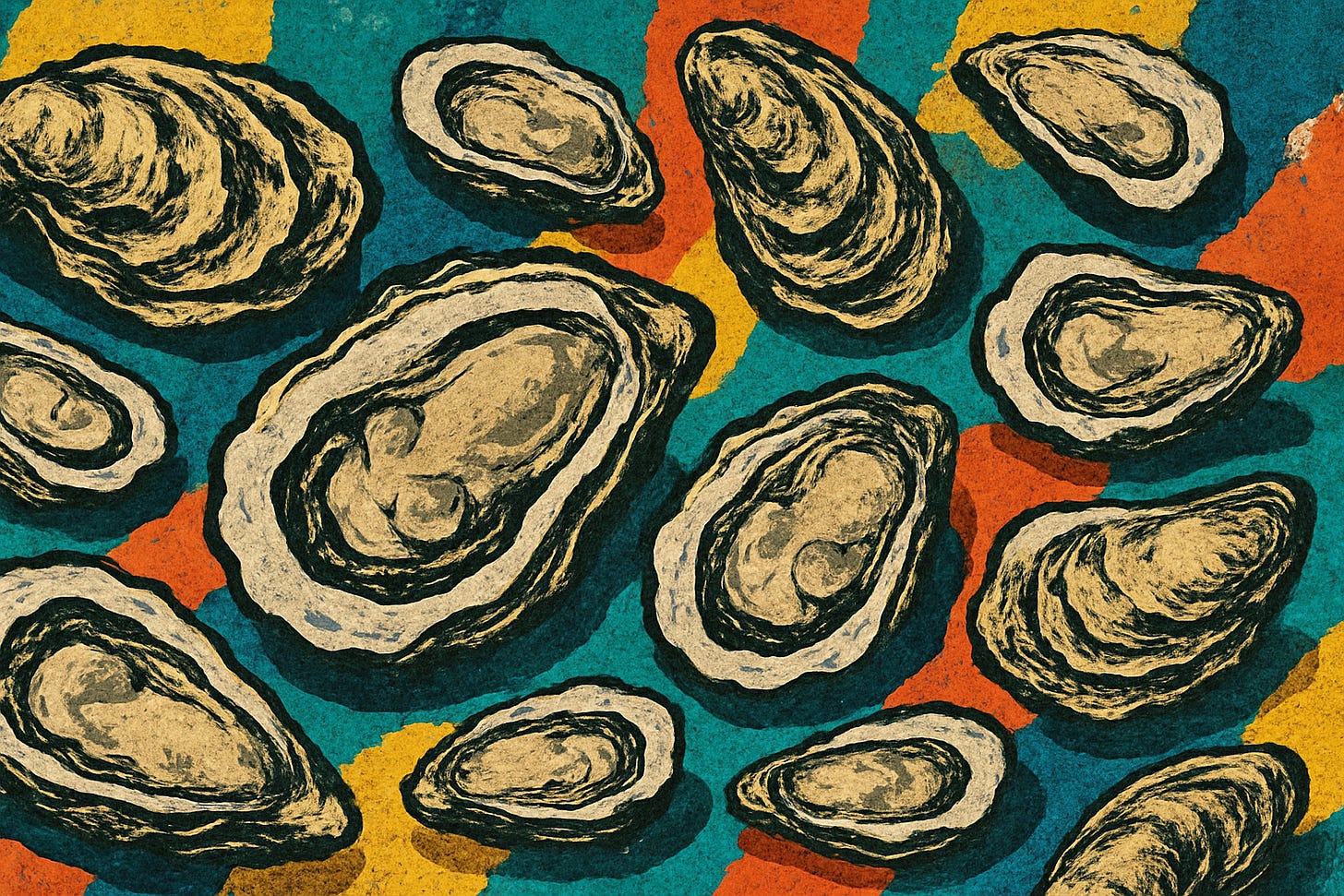🦪 7 things I learned this week
Hey folks, here’s a fresh batch of fascinating facts, from ants raising another species’ kids to oyster reefs holding back monsoons:
Concrete reefs encrusted with oysters shield one of Bangladesh’s most vulnerable islands from rising seas. They trap sediment up to 30 metres behind them, hold it steady through monsoons, and cut wave power.
In northern Peru, people built a 10-km wall across the desert about 900 years ago to protect fields and canals from El Niño floods. Radiocarbon dating shows they started soon after a big flood, using the wall to prevent future disasters.
Researchers found that queens of the Mediterranean harvester ant Messor ibericus can produce male ants of a different species, Messor structor. Those males then help father hybrid workers, who go on to support the M. ibericus colony. This strategy, in which one species produces offspring of another to maintain the colony, has never been observed in any other animal.
A 2022 study found that a full-scale nuclear war between the US, Russia and their allies would trigger famine, killing over 5 billion people — about 63% of the world’s population.
A 1,900-year-old Buddha statue was found in the ancient Egyptian port of Berenike on the Red Sea. Likely brought by a visitor from South Asia, the 71 cm statue shows the Buddha standing with his robes in hand. It dates to Roman Egypt, when ships from India carried ivory, pepper, and textiles to its ports.
In the 19th century, long-distance walking was a popular sport known as pedestrianism. In 1879, 10,000 people packed Madison Square Garden to watch 13 athletes walk 450 miles. The winner kept going, covering 530 miles in six days.
None of the 18 musicals that opened on Broadway last season has turned a profit. “Tammy Faye,” “Boop!” and “Smash” each cost over $20 million and closed within four months, losing everything.
What I’ve been reading
Whose punctuation is more human: Yours or A.I.’s?: “For a good stretch of recent history, most of the written material that people spent time with — the stuff beyond signs and menus — was full-on writing-writing: text that somebody sat down and composed, maybe revised or edited, maybe even had professionally printed. And now it does not — like, at all.”
The eccentric dog breeds that vanished: “For centuries, the world was home to a kaleidoscopic array of outlandish dogs — some of which were so bizarre, they sound made-up. In Hawaii, there was the Poi, which only ate vegetables and was treated more like a goat than a relative of wolves. Meanwhile, in the Pacific Northwest, there was the woolly Salish, a literal sheepdog bred for its wool, which was turned into clothes.”
How we got young people to like theatre: “Rather than continuing to behave like a traditional summer stock theatre that produces no more than two shows at a time, [we] created a new structure that leans into the ‘festival’ part of our name. A staff of more than 100 put up eight shows at once, with nearly 100 performances by more than 130 artists over three weeks in four venues. It was a spectacle that created an energy and buzz that brought a small rural Berkshires town to life in a surprising fashion.”
And that’s it for today! Thanks for reading! If you enjoy the newsletter, share it with a friend. And if you really enjoyed it, consider upgrading to a paid subscription: it helps support my work and means a lot.
Elia Kabanov is a science writer covering the past, present and future of technology (@metkere)
Cover art: Elia Kabanov feat. DALL-E.


